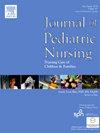孤独症诊断评估中护理者满意度的混合护理模型预测因子
IF 2.3
4区 医学
Q2 NURSING
Journal of Pediatric Nursing-Nursing Care of Children & Families
Pub Date : 2025-07-16
DOI:10.1016/j.pedn.2025.07.001
引用次数: 0
摘要
在自闭症护理管理中,获得诊断服务的机会减少是一个众所周知的障碍。利用结合远程医疗和面对面预约的混合护理模式可能是增加获得护理机会的一种选择。目前的研究考察了照顾者对一种用于执行儿童自闭症诊断评估的混合模型的满意度。方法采用方便抽样的定量研究设计,对医疗服务欠缺地区转诊儿童的护理人员进行远程医疗满意度调查。通过混合模型的诊断评估的及时性和准确性也进行了评估。大多数护理人员没有报告远程医疗的障碍,并表示混合服务要么更好,要么等于传统的预约。临床医生的能力和礼貌、儿童护理对工作人员的重要性以及远程医疗预约的可及性预测了护理人员对混合护理模式的满意度。混合护理模式提高了时效性,并与传统的面对面评估结果验证了评估结果的准确性。混合护理模式可能是增加儿科患者获得自闭症诊断评估的一种解决方案,特别是对于那些生活在医疗服务不足地区的儿童。进行自闭症筛查评估的临床医生应考虑纳入远程医疗预约,以促进儿童自闭症诊断评估。将患者转介到混合方案的临床医生应在转介之前评估可能阻碍远程医疗使用的潜在因素。本文章由计算机程序翻译,如有差异,请以英文原文为准。
Predictors of caregiver satisfaction with a hybrid care model for autism diagnostic evaluations
Background
Decreased access to diagnostic services is a known barrier in autism care management. Utilizing a hybrid care model incorporating telehealth and face-to-face appointments may be one option to increase access to care. The current study examined caregivers' satisfaction with a hybrid model used to administer pediatric autism diagnostic evaluations.
Methods
We used a quantitative research design with convenience sampling to administer a telehealth satisfaction survey to caregivers of children living in medically underserved areas who were referred for an autism diagnostic evaluation. Timeliness and accuracy of diagnostic evaluations via the hybrid model were also assessed.
Findings
Most caregivers did not report barriers to telehealth, and indicated the hybrid services were either better or equal to traditional appointments. Clinician competence and courtesy, the importance of the child's care to the staff, and access to telehealth appointments predicted caregiver satisfaction with the hybrid care model. The hybrid care model resulted in improved timeliness, and the accuracy of the evaluation results was verified with those obtained using traditional, face-to-face evaluations.
Discussion
A hybrid care model may be a solution to increase access to autism diagnostic evaluations for pediatric patients, especially for those living in medically underserved areas.
Clinicians who administer autism screening assessments should consider incorporating telehealth appointments to facilitate pediatric autism diagnostic evaluations. Clinicians referring a patient to a hybrid program should assess for potential factors that would impede the use of telehealth prior to referral.
求助全文
通过发布文献求助,成功后即可免费获取论文全文。
去求助
来源期刊

Journal of Pediatric Nursing-Nursing Care of Children & Families
NURSING-PEDIATRICS
CiteScore
3.70
自引率
8.30%
发文量
291
审稿时长
65 days
期刊介绍:
Official Journal of the Society of Pediatric Nurses and the Pediatric Endocrinology Nursing Society (PENS)
The Journal of Pediatric Nursing: Nursing Care of Children and Families (JPN) is interested in publishing evidence-based practice, quality improvement, theory, and research papers on a variety of topics from US and international authors. JPN is the official journal of the Society of Pediatric Nurses and the Pediatric Endocrinology Nursing Society. Cecily L. Betz, PhD, RN, FAAN is the Founder and Editor in Chief.
Journal content covers the life span from birth to adolescence. Submissions should be pertinent to the nursing care needs of healthy and ill infants, children, and adolescents, addressing their biopsychosocial needs. JPN also features the following regular columns for which authors may submit brief papers: Hot Topics and Technology.
 求助内容:
求助内容: 应助结果提醒方式:
应助结果提醒方式:


